Nationality American Website www.dovebradshaw.com | Name Dove Bradshaw | |
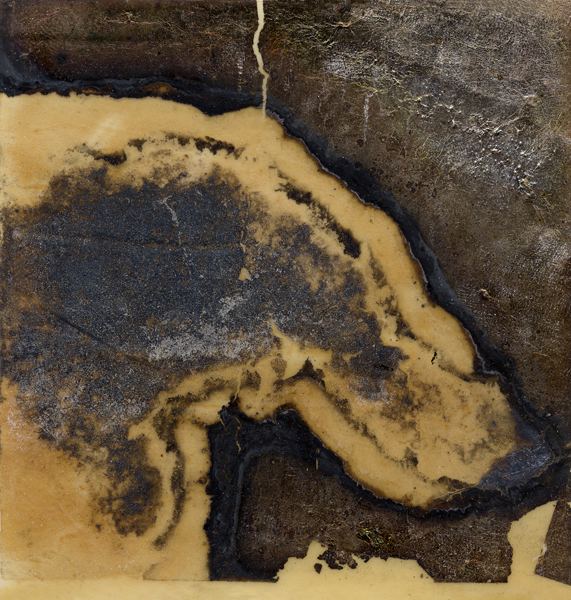 | ||
Education The School of the Museum of Fine Arts, Boston / Tufts University, BFA and Fifth Year Competition; Boston University Known for Sculpture, Installation, Photography, Performance, Video and Film | ||
30secsjuan 2012 dove bradshaw
Dove Bradshaw (born September 24, 1949, in New York City) is an American artist. Beginning in 1969, Dove Bradshaw pioneered the use of Indeterminacy by enlisting the unpredictable effects of time, weather, erosion, and indoor and outdoor atmospheric conditions on natural, chemical, and manufactured materials. She has created chemical paintings that change with the atmosphere, erosion sculptures of salt, stone sculptures that weather, and, worked with crystals that receive radio transmissions from weather stations, local and short wave, along with radio telescope signals from Jupiter.
Contents
- 30secsjuan 2012 dove bradshaw
- Kit Messham Muir Interview with Dove Bradshaw artist New York 1 July 2012
- Education residencies
- Indeterminacy
- John Cage
- Three retrospectives and public collections
- Commissions
- Important recent exhibitions
- Awards
- Curatorial work
- Plain Air 1969
- Contingency 1984
- Guilty Marks 1990
- Passion Notation Indeterminacy MaterialImmaterial outdoor sculptures beginning 1993
- Notation 1993
- Indeterminacy 1995
- MaterialImmaterial 2000
- Radio Rocks 1999
- Six Continents 2003
- Bookscatalogues solo
- References
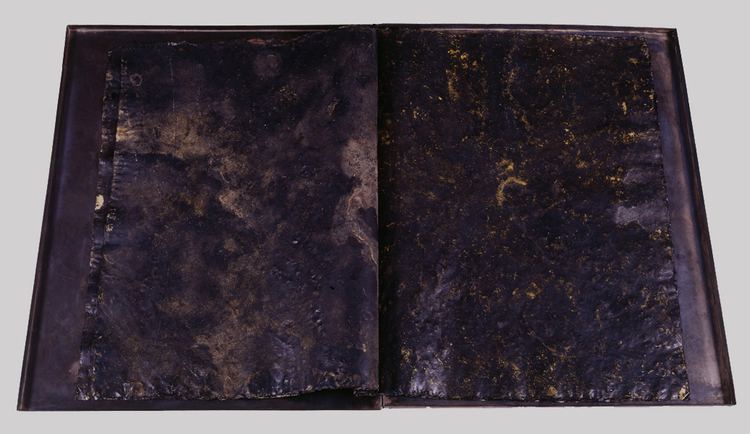
As Artistic Advisor to the Merce Cunningham Dance Company since 1984, she designed decor and lighting for a decade of the company’s stage and television productions. Four mid-career exhibitions are: 1984 Syracuse University, Utica; New York; 1998, the Museum of Contemporary Art, Los Angeles; 2003, The City University of New York, with the publication of Dove Bradshaw, Nature, Change and Indeterminacy, text by Thomas McEvilley and A Conversation, John Cage and Thomas McEvilley; 2008, Pierre Menard Gallery, Cambridge, MA, with catalogue. Represented in the permanent collections of numerous American (Museum of Modern Art, The Metropolitan Museum of Art, The National Gallery), European (The British Museum) and Russian (Russian State Museum , Marble Palace). Exhibiting regularly internationally, she was included in the Gwangju Biennale, South Korea and a solo exhibition in Tokyo.
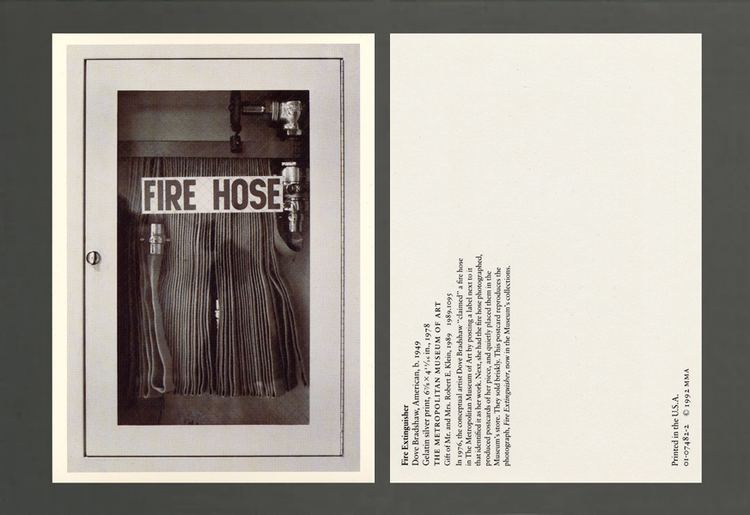
Kit Messham-Muir: Interview with Dove Bradshaw, artist, New York, 1 July 2012
Education, residencies
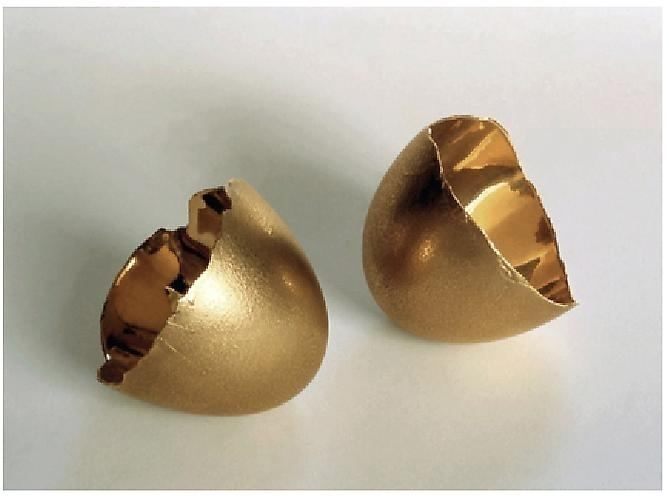
A graduate from the College of General Studies, Boston University, Bradshaw received a BFA from the Boston Museum School of Fine Arts and Tufts University. She has had residencies at the Pier Art Centre, Orkney, Scotland, 1995; Sirius Art Center, Cobh Ireland, 2000; the Statens Vaerksteder for Kunst, Copenhagen, 2000-2001; Niels Borch Jensen Printmaking Studio, Copenhagen, 2000, 2005, 2008; Beuys in difesa della natura.pdf Difesa Della Natura, Bolognano, Italy, 2006; the Spirit of Discovery 1 and 2 in Trancoso, Portugal, 2006, 2007; and The School of Contemporary Art, Pont-Aven, France, 2007.
Indeterminacy

Bradshaw is responsible for bringing the idea of indeterminacy in music to the visual art world. Taking inspiration from the work of composer John Cage, Bradshaw allows natural forces to act upon her works to bring them to completion. Her first work in this regard was a 1969 installation entitled Plain Air,” in which a pair of mourning doves were introduced to hanging bicycle wheels and floor mounted targets.
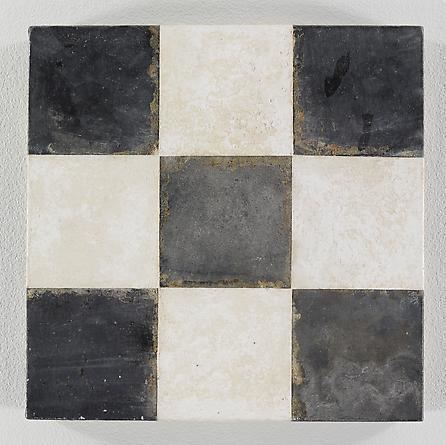
Other ways in which her work has incorporated indeterminacy into its nature are the chance positioning of work, the use of materials particularly susceptible to weather and indoor atmosphere, the gradual erosion by water of salt and stone, and the use of inherently unstable substance such as acetone, mercury and sulfur.
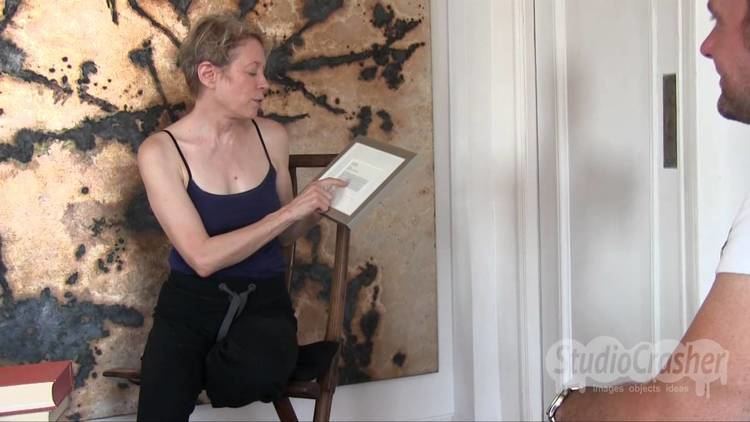
One of her noteworthy and ongoing indeterminate works is Performance. In 1976 Bradsahaw “claimed” a fire hose in the Metropolitan Museum of Art. She mounted a guerrilla wall label beside the hose, and placed copies of a self-published postcard in the museum shop. In recognition of her claim, an official museum postcard was issued of the work in 1992, and in 2006, Dadaist collector Rosalind Jacobs acquired the label placed by Bradshaw. Mrs. Jacobs donated this piece to the Metropolitan Museum, who accepted the piece as part of their permanent collection in 2007.
Bradshaw’s equally early fusion of scientific exploration with art practice has been broadly incorporated into the Process and Art/Science Movements. In this vein she made the chemically activated silver Contincency Paintings that are sensitive to atmospheric conditions. Weather serves as a catalyst slowly capturing transient metamorphoses in what she calls Time Sculptures in marble, pyrite, calcstone, and copper, in the Indeterminacy, Material/Immaterial and Notation Series. In the Negative Ions, Six Continents and Waterstones works Bradshaw plots the gradual erosion of salt and stone with water as the transformative agent. Time is the counterpoint. She has said “Poetry is everywhere evident and therefore one only need present materials.”
John Cage
John Cage was a supporter for many years of Bradshaw’s work. Cage selected her to accompany him in his 1991 Carnegie International presentation and she was represented in his similarly scored Rolywholyover Circus, 1993–95, consisting of his selection of Twentieth Century works. Appointed in 1984 as Artistic Advisor with William Anastasi for the Merce Cunningham Dance Company, she designed sets, costumes and lighting accompanied by the music of John Cage, David Tudor, Takahisa Kosugi and Emanuel Dimas De Melo Pimenta for a decade of the company’s stage and television productions around the world.
Cage talked about her work with Thomas McEvilley in Dove Bradshaw, Works, 1969–1993, which appeared as a chapter in McEvilley’s 1999 Sculpture in the Age of Doubt and was reprinted in her 2003 monograph The Art of Dove Bradshaw, Nature, Change and Indeterminacy, Batty Publisher, for which Mr. McEvilley wrote the text.
Three retrospectives and public collections
In 1984 an early survey – Works 1969–1984 - was shown at Syracuse University, Utica, New York. Bradshaw has had three mid-career exhibitions, beginning in 1998 with Dove Bradshaw 1988–1998 at the Museum of Contemporary Art, Los Angeles; Dove Bradshaw, Formformlessness, 1969–2003 at City University of New York; and Time Matters 1969–2008 at the Pierre Menard Gallery, Cambridge, MA. She is represented in the permanent collections of numerous museums in America and Europe, including one in Russia. She also regularly exhibits internationally.
Commissions
In June 2006 Bradshaw was commissioned by the Baronessa Lucrezia Durini to execute Radio Rocks as a permanent installation in Bologna. Galena and pyrite tuners continuously draw local, short wave and outer space signals echoing the Big Bang. In May 2008, Larry Becker Contemporary Art in Philadelphia will host the first gallery installation, which will add a live reception from radio telescope of storms and other radio emissions from the planets.
In the fall of 2006 sponsored by Shu Uemura of Shu Uemura Cosmetics, she traveled to the Asia for the first time exhibiting in Tokyo’s Gallery 360°.
For the 6th Gwangju Biennale in South Korea she presented Six Continents, with salt taken from each of the continents.
Important recent exhibitions
Recently she was included in the Solomon R. Guggenheim Museum’s American Artists Contemplate Asia, 1860–1989, a solo exhibition at Senzatitolo Associazione Culturale, Rome, inclusion in Elements at The Chemical Heritage Museum, Philadelphia for The Year of Chemistry 2011.
Awards
Curatorial work
She has curated four group exhibitions in memory of Sol LeWitt, ONE at Bjorn Ressle Gallery, New York, 2007, ONE More at the Esbjerg Art Museum, Esbjerg, Denmark, 2008 which was rebuilt for Thomas Rehbein Gallery, Cologne in January, 2009 and ONE, Six Americans/Six Danes Stalke Up North, Copenhagen, 2009. Anastasi, Bradshaw, Cage, Marioni, Rauschenberg, Tobey: Imitating Nature in her Manner of Operation, Sandra Gering Gallery, 1991; 8 Painters: 2005
Anastasi Bradshaw Cage Cunningham, curators: Marianne Bech and Dove Bradshaw, The University Art Museum, The University of California at San Diego; Anastasi Bradshaw Cage Cunningham, curators: Marianne Bech and Dove Bradshaw, The Bayly Museum, The University of Virginia, Charlottesville, Virginia; 2001; Anastasi, Bradshaw, Cage, curators: Marianna Bech and Dove Bradshaw, Museum of Contemporary Art, Roskilde, Denmark, Anastasi, Bradshaw, Cage, Marioni, Rauschenberg, Tobey, Sandra Gering Gallery, New York, 1990; 8 Painters:Jon Abbot, William Anastasi, Dove Bradshaw, Dana Gordon, Bruce Halpin, Carl Kielblock, Theodoros Stamos, Douglas Vogel, The Ericson Gallery, New York, 1981
Plain Air (1969)
Originally not conceived as art, this work began with a gift of a pair of Ring-necked Mourning doves and led to the design of their environment. The doves were given free rein of the artist’s studio. A bicycle wheel was hung for a perch, with an adaptation of a Zen archer’s target nailed to the floor below. The material trace of the work lay in photographs and 1969 bronze and silver casts of broken eggshells. "View works"
The first exhibition was at the Boston Museum School of Fine Arts, 1969, twenty years later it opened at the Sandra Gering in New York, 1989, then at the Mattress Factory Museum, Pittsburgh, 1990, and PS1 Contemporary Art Center, New York, 1991. This was the artist’s first sound sculpture—most apparent in the PS1 exhibition. Every day, after eating and preening, one of four birds flew to each corner room-support near the ceiling. Beginning with out-of-phase rounds they gradually came into sync after three quarters of an hour, winding their song into a hypnotic crescendo nearing the hour. A pause followed, then softly they would start again, and repeated this pattern many times.
Contingency (1984)
The Contingency Series is Bradshaw’s first significant body of two-dimensional work. Beginning in 1984, instead of paint she began using materials reactive to the environment. "View works"
Silver, which itself is subject to air, light and humidity, became the ground; liver of sulfur the chemical agent; and metal plates, wood, paper, linen, and the wall itself the various supports. The works range in size from a three and a half inch leaf on paper to paintings five feet in height and width. The appearance and composition of these works changes over time as reactions between the materials and environment occur.
The amount of chemicals used in each piece significantly affects the outcome. Black comes up faster if the solution is dense, yet if it pools, an ashy white appears, flaking at its edges. Fire seems to be the reference. With rain the works sweat—-drip lines become visible pouring from denser pools. Silver and sulfur, alchemical elements, are used because they are highly volatile.
As the artist explains, the process itself could be related to photography: the silver to the emulsion, the liver of sulfur to the developer. Although without using fixer, the exposure is open-ended.
Guilty Marks (1990)
These paintings deal with themes of perishability and change. They consist of various chemicals, powdered pigments, ink, and varnish poured and dripped on the canvas. As a Danish reviewer wrote, “What the elements will do to one another only time will tell. The fusion between the materials is the essential - [like] the fusion between culture and nature. Bradshaw facilitates it, but after that, the work is out of her hands. It is nature that takes over." "View Works"
Passion, Notation, Indeterminacy, Material/Immaterial: outdoor sculptures (beginning 1993)
After Bradshaw’s environmentally reactive works which were the two-dimensional Contingency Series, she searched for a way to make sculptures that would be similarly reactive, but would also change shape. "View works"
The first work was a relief, a wall-embedded copper bar titled Passion. It was treated with acetic acid, which left a running stain down the wall. The first outdoor version (1995) was set in the exterior wall of the Pier Art Center, Stromness, Orkney, Scotland. The island atmosphere greatly assisted a natural bleed.
Notation (1993)
The Notation sculptures consist of copper or bronze cubes or prisms set on marble or limestone and left outdoors to weather. Smaller indoor versions were assisted with ammonium chloride copper sulfate to prompt a bleed.
Indeterminacy (1995)
The Indeterminacy Stones, begun in 1994, consisted of a chunk of pyrite, set atop a piece of marble, and then left outdoors to weather. The pyrite transformed into limonite when exposed to the elements, leaving a permanent iron rust stain. It may take less than ten years or over a century to dissolve depending on composition and environment. For the first exhibition of these works at Sandra Gering Gallery, New York, 1995, three boulders were gathered—one flat, one vertical, one wedge shaped.
Ann Barclay Morgan, writing about work in Sculpture Magazine, commented “…the action of “bleeding”…could be seen as the female life-force in the process of being released. The transformation into the deep-colored limonite lends a sensuous quality to the marble....Bradshaw’s use of Vermont marble [also] had intriguing implications. This material appears to embody a freeing from the confining notion of purity, emblematic of Carrara marble, toward the reality of life suggested by the veining of the marble itself, calling to mind the arteries of the human body that become more visible with age.”
Material/Immaterial (2000)
The Material/Immaterial Stones, made in Denmark, coupled local spring and aged calcstone and produced a white bleed on a dark stone.
Radio Rocks (1999)
Radio Rocks are made up of three different kinds of stones each piled into cairns that in Neolithic times were used as astronomical markers. Bradshaw's cairns, in addition to recalling their ancient use, focus on the aspect of sound by functioning as multi-directional antennas. "To hear the sounds click here."
In each of these sculptures there are three radios designed to receive frequencies from three different zones. On top of one is a pyrite mixer designed to receive live emissions from Jupiter transmitted via a dedicated line from the radio telescope at Pisgah Astronomical Research Institute in Rosman, North Carolina. On one side, a galena mixer picked up world-band short wave. On the other, a receiver developed by the satellite industry drew live microwaves identified as echoes of the Big Bang. The other two cairns featured fluorite, tourmaline and hematite, acting as non-linear mixers, were computer programmed to attract random local and world-band frequencies. The hematite mixer continuously channeled Weather Radio. Levels of all the radios were set at a murmur. The outer space sounds invoke celestial harmonies that from the quieter time of Pythagoras have been referred to as the “Music of the Spheres.”"View works"
Six Continents (2003)
Six Continents at the 6th Gwangju Biennale, Gwangju, South Korea, 2006 consists of six sculptures made from salt taken from each continent, funnels and water. The various salts, colored by minerals from each locale, react differently when subjected to water. Each sculpture is made of a 150-pound salt mound placed under a suspended funnel, each calibrated to release 7 drops per minute. The salt comes from:
The work premiered at Larry Becker Contemporary Art, Philadelphia, 2005 and traveled to SolwayJones, Los Angeles later that year. "View works"
